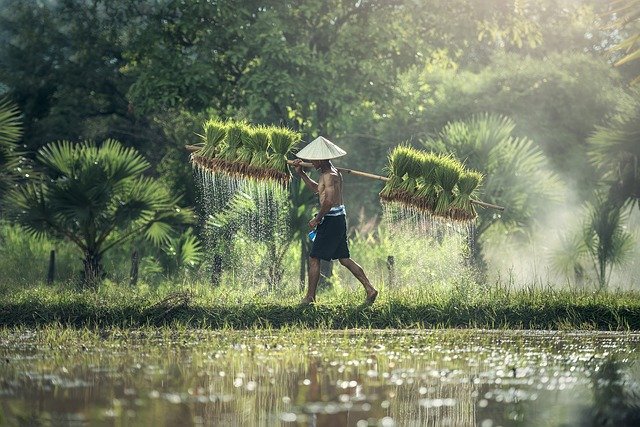Introduction and Background
Agriculture plays a pivotal role in the Indian economy. Although its contribution to gross domestic product (GDP) is now around one-sixth, it provides employment to 56 percent of the Indian workforce. Also, the forward and backward linkage effect of agricultural growth increases the income in the non-agricultural sector. The growth of some commercial crops has significant exports for agricultural commodities and brings about faster development of agro-based industries.
Thus agriculture not only contributes to the overall growth of the economy but also reduces poverty by providing employment and food security to the majority of the population in the country and thus it is the most inclusive growth sector of the economy. The structural reforms and stabilization policies introduced in India in 1991 initially focused on the industry. For Indian farmers, the government launched kissan net site with better information.
Background
One of the paradoxes of the Indian economy is that the decline in the decline in the share of agricultural workers in total workers has been slower than the decline in the share of agriculture and allied activities in the GDP declined from 57.7 percent in 1950-51 to 15.7 percent in 1950-1 to 15.7 percent in 2008-9. The share of agriculture in total workers, however, declined slowly from 75.9 percent in 1961 to 56.4 percent in 2004-05 (Table 1). Between 1961 and 2004-05, there was a decline of 34 percentage points. In terms of growth, the performance of agriculture in the post-Independence era has been impressive as compared to the pre-Independence period. The highest growth rate of GDP from agriculture and allied activities of 3.9 percent per annum in recent years was recorded in the period 1992-3 to 1996-71.
Roles, challenges and opportunities for smallholding agriculture in India
In this section, we examine the role, challenges, policies, and opportunities for smallholding agriculture in India. India is a big country with 1.2 billion populations. One state’s population is closer to that of Europe. Therefore, there is also a need to look at the regional level to bring out the variations. Structure of land holdings: India is a land of small farmers. According to the agricultural census 2000-01, there were an estimated 98 million small and marginal holdings out of around 120 million total land households in the country. The government provides kkisan for the farmer that is one of the best opportunities.
Institutional innovations
Smallholding agriculture faces many challenges. But, a number of innovative institutional models are emerging and there are opportunities for small and marginal farmers in India. Institutions relating to (a) land and water management, (b) group or cooperative approach for inputs and water management and inputs and marketing and, (c) value chains and supermarkets can enhance productivity, sustainability, and incomes of smallholding agriculture. The development of irrigation and water management is crucial for raising levels of living in rural areas. Major areas of concern in irrigation are decline in real investment, thin spread of investment, low recovery of costs, and decline in the water table.
Conclusion:
There are many small farmers in India that are facing challenges and opportunities and day by day they are increasing day by day. There are many small or big challenges that the farmers are facing nowadays like challenges from the big farmers and new innovations in the industry that make the farmer’s conditions more problematic and make their conditions degrading day by day. These conditions are threatening for the small farmers these days and making their conditions more threatening and challenging day by day this is also causing the farmers to do suicide. These conditions are causing problems in the lives of farmers and their monetary problems for their families.





